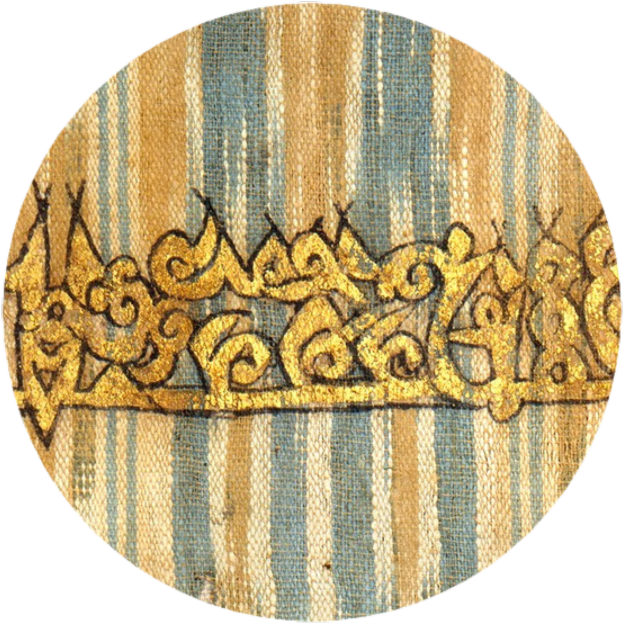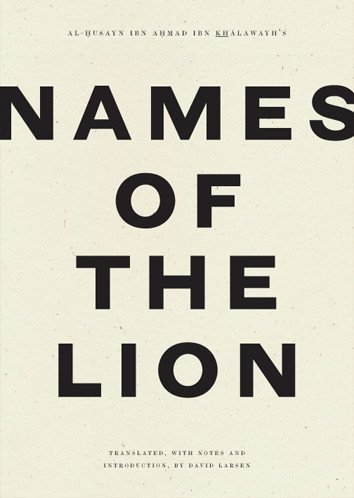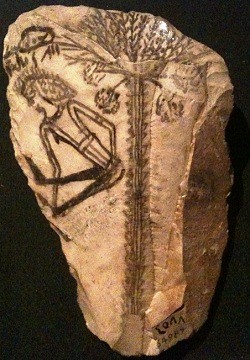"To what part of the soul, then, does memory belong? The answer is clear: to the same part as the imagination. The essential objects of memory [i.e. sensory perceptions] are the fabric of the imagination, and without imagination its accidental objects [i.e. thoughts] would not occur.
"Someone may be puzzled: if affection is present to the mind, and the real-life thing is excluded, then how is anything remembered in its absence? For it is clear that what is thus produced through sense perception in the soul and its affiliated region in the body must be thought of as some kind of still-life [zōgráphēma], and the fact of having it we call memory: as it occurs, the movement leaves something like an imprint of the perception as its sign, as people do when using signet-rings to make a seal."
"But if this truly describes the events of memory, which is it that we remember: the affection, or that thing from which it was produced? If it is the former, we would be unable to remember anything in its absence. And if it is the latter, given that what we sense is the affection, [the same question arises:] how do we remember the absent thing which we do not presently sense? And if something similar to an imprint or an inscription is inside us, how is our perception of it equal to the memory of something else, and not the selfsame thing? For when memory is actualized, what one contemplates and perceives is this affection.
"So how will one remember a thing when it is not there? One might as well be able to see and hear what is not there. Is this what in fact happens, and how it is received? For even as a picture painted on a panel is both a picture and a portrayal, and being one and the same thing is nevertheless endowed with different sorts of being, and it is possible to regard it both as a picture [unto itself] and a likeness [of something else] -- even so, we must apprehend our interior phántasma as an image with being unto itself, as well as being the image of something else. Insofar as it is unto itself, it is an object of contemplation and a mental image. Inso far as it is of something else, it is a likeness and a memory."
On Memory and Recollection 450a22-32, 450b11-27
"Someone may be puzzled: if affection is present to the mind, and the real-life thing is excluded, then how is anything remembered in its absence? For it is clear that what is thus produced through sense perception in the soul and its affiliated region in the body must be thought of as some kind of still-life [zōgráphēma], and the fact of having it we call memory: as it occurs, the movement leaves something like an imprint of the perception as its sign, as people do when using signet-rings to make a seal."
"But if this truly describes the events of memory, which is it that we remember: the affection, or that thing from which it was produced? If it is the former, we would be unable to remember anything in its absence. And if it is the latter, given that what we sense is the affection, [the same question arises:] how do we remember the absent thing which we do not presently sense? And if something similar to an imprint or an inscription is inside us, how is our perception of it equal to the memory of something else, and not the selfsame thing? For when memory is actualized, what one contemplates and perceives is this affection.
"So how will one remember a thing when it is not there? One might as well be able to see and hear what is not there. Is this what in fact happens, and how it is received? For even as a picture painted on a panel is both a picture and a portrayal, and being one and the same thing is nevertheless endowed with different sorts of being, and it is possible to regard it both as a picture [unto itself] and a likeness [of something else] -- even so, we must apprehend our interior phántasma as an image with being unto itself, as well as being the image of something else. Insofar as it is unto itself, it is an object of contemplation and a mental image. Inso far as it is of something else, it is a likeness and a memory."
On Memory and Recollection 450a22-32, 450b11-27





